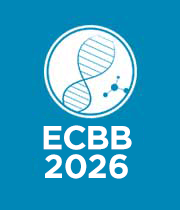Title: Transcriptional and hormonal regulation of industrially important metabolites biosynthesis in plants and microalgae
Abstract:
Secondary metabolites produced from plants and microalgae are being used as food additives, flavors, and industrially important pharmaceuticals. The improved production of these metabolites through genetic engineering and use of phytohormones (elicitation) has unlocked a new area of research that could have significant economic benefits for the pharmaceutical and therapeutic industry. Two strategies will be discussed:
Firstly, the transcriptional regulation to increase the concentration of artemisinin biosynthesis in medicinal plant; Artemisia annua. Artemisinin is antimalarial, only produced from A. annua; however, its natural content is low, making its cost high. Different transcription factors have been used to increase artemisinin concentration. The role of YABBY TFs as positive regulators of artemisinin biosynthesis through activating CYP71AV1 and / DBR2 promoters will be discussed.
Secondly, the use of methyl jasmonic acid to increase the concentration of Eicosapentaenoic acid (EPA) and Docosahexaenoic acid (DHA) and their precursor FAs in Tribonema minus will be discussed. EPA, and DHA are primary ω-3 PUFAs found in microalgae. The precursors of EPA and DHA which are α-Linolenic acid (ALA), and Linoleic acid (LA), are not produced by the human body, and their bioconversion rates to EPA and DHA are very low, necessitating their acquisition from natural resources. Today, microalgae have become the major focus of researchers, and are are being exploited for these metabolites of human importance. The role of methyl jasmonate as a positive regulator of EPA, and DHA production in T. minus will be discussed. Also, the effect of methyl jasmonate on the expression of important FA regulating genes including malonyl-CoA ACP transacylase (MCAT), ß-ketoacyl synthase (KAS), and fatty acid desaturase (FAD) will be discussed. The present study is important in providing eco-friendly and cost-effective approaches to increase essential metabolites in plants and microalgae, and could offer the potential for industrial and commercial production if cultivated on a large scale.



